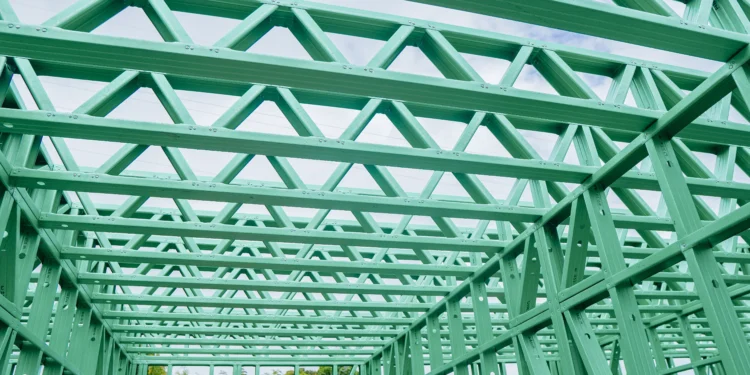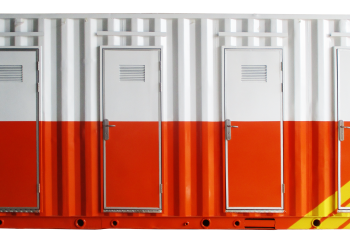The metal floor truss provides stability and strength to building floors. Designed as a prefabricated triangular metal structure, this building component connects support joists and efficiently spans the room’s width, ensuring optimal load distribution without the need for additional columns.
The prefabrication process in the factory results in high-quality components that speed up on-site installation, whether in commercial, industrial, or residential buildings. This structure also supports the practical integration of wiring and piping systems without compromising floor strength.
This article will discuss the uses of metal floor trusses in building construction, the various types available, and the reasons why Tradecorp utilizes light gauge steel (LGS) for building construction.
The Uses of Metal Floor Trusses in Building Construction
The Best Option for Mining Camp and Site Office
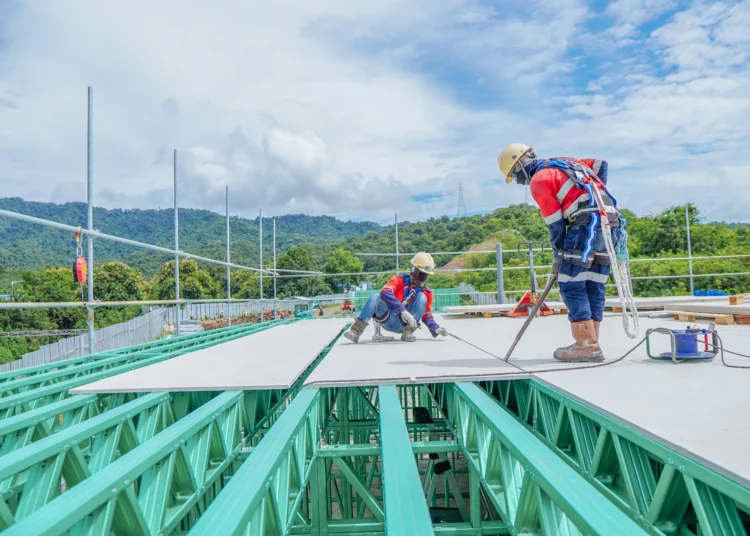
Metal floor trusses play a crucial role in creating stable and durable building floors. Made from robust steel, these trusses are designed in a triangular shape to evenly distribute weight and can support heavy loads without the need for additional columns.
Below are some of their main uses in construction:
1. Strong Support for Heavy Loads
Metal floor trusses can bear significant weight, such as heavy furniture and equipment, making them ideal for commercial and industrial buildings.
2. Simplifies Utility Installation
These structures have built-in spaces for HVAC ducts, pipes, and electrical wiring, allowing installation without altering or damaging the floor.
3. Spans Large Areas
Metal floor trusses can cover wide spaces without additional columns, making them perfect for large open spaces.
4. Flexible for Building Design
They adapt easily to various architectural styles, including spaces with high ceilings or sloped roofs.
5. Stable and Squeak-Free
Steel trusses are less prone to warping or squeaking compared to wood, making for a quieter, longer-lasting option.
6. Environmentally Friendly Choice
Steel is one of the world’s most recycled materials and produces less waste than wood.
The Components of a Floor Truss
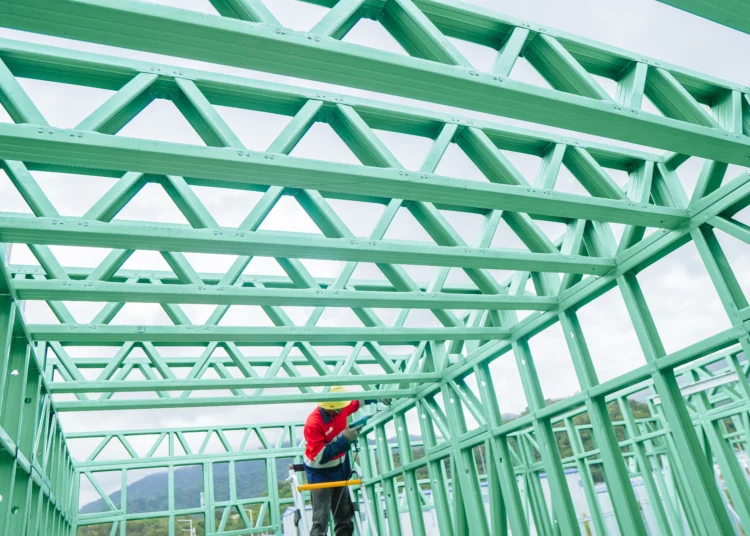
A floor truss is composed of several essential elements that provide maximum strength and stability for building floors. Each component plays a role in distributing loads evenly and facilitating the installation of various building utility systems. Below are the main elements of a floor truss.
1. Bearing
The bearing is a structural support, such as a beam, wall, or column, designed to hold the truss load and transfer it to the building’s foundation. This element is crucial for ensuring the truss remains stable and secure over the long term.
2. Top Chord
The top chord is the upper part of the floor truss that supports the direct load from the floor or deck above. It is typically made from strong steel to withstand both compressive and bending forces. The top chord also determines the overall height of the truss.
3. Bottom Chord
This component forms the lower section of the floor truss and usually handles tension forces. The bottom chord maintains the stability of the entire floor by keeping the structure level or horizontal.
4. Floor Panel/Deck
The floor panel or deck is a pre-assembled floor unit that includes the floor joist, subfloor, and finished flooring. In some designs, the floor panel also integrates the ceiling below and is supported by walls, columns, or beams.
5. Overall Depth
Overall depth refers to the vertical distance between the bearing and the highest point on the truss. This depth affects the truss’s strength and its ability to support loads.
6. Panel Length
Panel length is the horizontal distance between the center points of two consecutive panel points on the top or bottom chord.
7. Panel Point
A panel point is the intersection in the truss where the web and chord (top or bottom) cross and are connected by metal connector plates. This point strengthens the joint and reduces the risk of deformation.
8. Span
Span refers to the horizontal distance between the outer edges of the external bearings. This distance determines how wide an area the truss can span without additional support.
9. Triangulation
Triangulation is the process of forming a triangular pattern within the truss, providing added strength by evenly distributing loads across the structure.
10. Web Members
Web members connect the top and bottom chords and form the characteristic triangular pattern of a truss. They channel loads from the top chord to the bottom chord, helping maintain the overall structural integrity.
Tradecorp Uses LGS in Building Construction, What Are the Advantages?
The Best Option for Mining Camp and Site Office
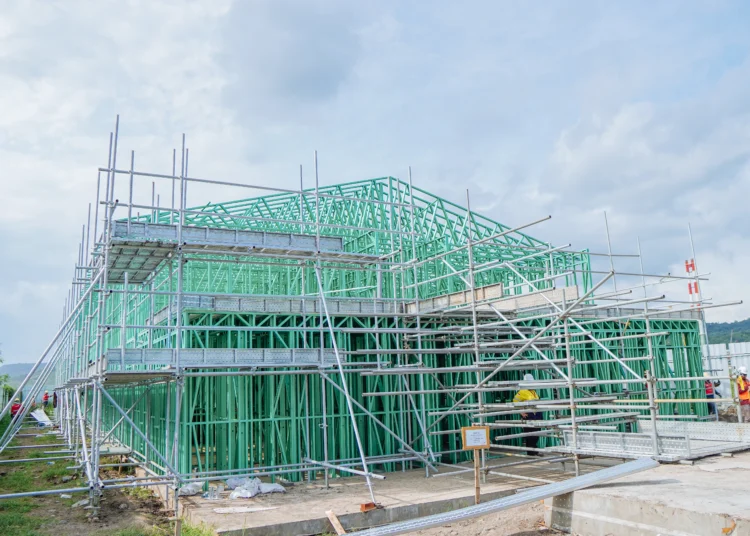
Tradecorp relies on Light Gauge Steel (LGS) to deliver strong, lightweight, and efficient construction solutions. LGS offers numerous benefits for projects that prioritize quality and durability. Here are the key advantages of using LGS with Tradecorp:
1. Consistent and Reliable Quality
LGS components are manufactured with strict quality control in the factory to ensure precision and consistent performance. Unlike wood, which has natural variations, steel offers uniform, defect-free quality, avoiding potential issues during construction.
2. Lightweight and Easy Assembly
The lightweight nature of LGS makes it easy to install without heavy equipment. This light steel reduces project completion times and minimizes installation errors, offering high efficiency in building construction.
3. Resistance to Rust, Fire, and Pests
LGS features an anti-rust coating that provides effective protection in humid environments. Additionally, its fire resistance makes it a safer choice compared to wood (which is flammable). Because steel is termite-proof, the structure remains durable and free from pest damage.
4. Flexibility in Design and Architecture
LGS enables great flexibility in building design, accommodating long spans, open floor plans, and unique architectural styles. It supports creating custom shapes and angles and can integrate with other structural systems to achieve complex, innovative designs.
5. Faster Construction Process
The option for prefabricated steel framing can significantly speed up projects. LGS components are often delivered pre-marked for easy on-site assembly, saving labor costs and boosting overall project efficiency.
6. High Strength and Stability
Proportionally, steel has a higher strength than materials like wood or concrete, making it ideal for buildings that require high load-bearing capacity and pressure resistance. LGS provides a solid, durable structure, even in extreme environments.
7. Sustainability for Green Projects
Steel is a fully recyclable material, making it an environmentally friendly choice. Using recycled steel reduces waste, conserves resources, and contributes positively to environmental sustainability.
8. Temperature and Noise Protection
Although steel is a high conductor of heat and sound, Tradecorp ensures that each LGS project includes thermal barriers and acoustic insulation systems. This minimizes heat loss and sound transmission, creating a comfortable interior environment.
9. Improved Jobsite Safety
The easier and more controlled installation process of lightweight steel enhances job site safety. Prefabricated steel reduces potential accident risks, creating a safer working environment for construction workers.


